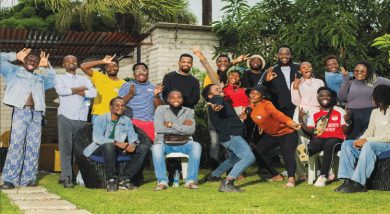Stitching Malawi’s Fashion Journey

For the first time this year, Malawi witnessed the launch of the inaugural Malawi Fashion Week (MFW), which follows on the heels of other fashion shows. At the event, several new designers were revealed and a crop of new models saw the beginning of their careers in modelling, but how is this shaping the fashion industry? And what challenges does the industry face?
Malawi can now be called a fashion district thanks to the success of the inaugural Malawi Fashion Week (MFW) 2013. Sixty local fashionistas registered for the event which took place in Lilongwe. Some designers came from as far as Namibia and South Africa.
However, the success of MFW is never worth discussing if its roots—Fashion Malawi Edition (Fame) and unfading Nzika Wear fashion exhibitions are not thought of.
Zilani Nyundo, who has organised the first three Fame shows, testified in an earlier interview that introducing fashion in Malawi has never been easy.
Certainly, the story of fashion in Malawi sounds ugly, especially because of the resistance to embrace new designs.
But despite the challenges, Nyundo says the journey has been exciting.
“It has been an exciting journey of three ps—people, potential and progress. We have welcomed people with so much potential, desire to work hard and do well and through these traits, we have achieved a lot as a country as we have something to call Malawi’s fashion,” she said.
Nonetheless, as we celebrate the new era of fashion settling in Malawi, the future is of great concern.
Optimistic Nyundo believes the future is bold.
“It is all about striving for quality. Fame adheres to the key element of fashion which is ‘uniqueness’ and it is this that has attracted many people and organisations to participate and sponsor us. We have registered observable success. We are on a journey and I can say we are on the right track,” she said.
Nyundo said fashion design builds creativeness and the products enhance society. Through pure enjoyment, value and equality and in turn local sales and exports lead to income generation for both artists and the country.
The 2012 Fame designer of the year Yavinde Nyasulu and fashion designer Lilly Alfonso, in earlier interviews, expressed optimism saying the increase in number of fashion shows indicate growth in fashion activities.
Alfonso said the fashion weeks have helped designers to expose and share talents. She added that more benefitting are fashion shows that involve foreign designers as local artists appreciate foreign talent.
Chikumbutso Mtumodzi, who was part of the organising committee of MFW, treasures most the success of MFW. He said the event has left Malawians with a complete sense of what fashion is all about.
“We are on the move. The fashion events that have been around and the new MFW have given local models an opportunity to learn. At MFW, they learnt from South African and Zambian designers. And recently, Malawi got recognition at London fashion week which is success in its own. DRCongo held
its first fashion week this week and this means we are ahead,” said
Mtumodzi.
Nzika Wear, a brand that has been in fashion design since 2005, feels the fashion events have really helped to attract people into fashion design.
Creative director of Nzika Wear, Mwai Namaona, said fashion shows help in talent exchange and income generation for artists.
However, Namaona said the local fashion shows are not benefitting designers.
“In other countries, to exhibit your work at a fashion event earns one a lot of money. But what is happening here in Malawi is that the designers are merely exploited.
“To participate, one pays participation fee and also buys the space for exhibition. These come on top of expenditures on meals, transport and accommodation costs and looking at our market it leads to losses,” he said.
Namaona believes if organisers can step up in securing more funds and sponsor artists to exhibit their work, more designers can come in and through more profits, designers can invest more in their products and in the long run build a big fashion industry with independent designers.
He also called for the need of government to invest more in fashion and come up with policies and strategies that support growth of fashion. He cited the idea to introduce fashion day, whereby people will be encouraged to put on traditional clothes.
“In Ghana, every Friday people put on traditional clothes. We can do it here in Malawi to create a market for clothes made by fashion designers,” he said.
Namaona added that the mushrooming of fashion events is a call to textile manufacturers to produce cloth that can be used in fashion design. He also called for the need of the manufacturers to sell their cloth on retail saying many designers cannot afford buying in bulk.
He finally urged local designers to think more of Malawi identity in clothing and not copying foreign designs.





